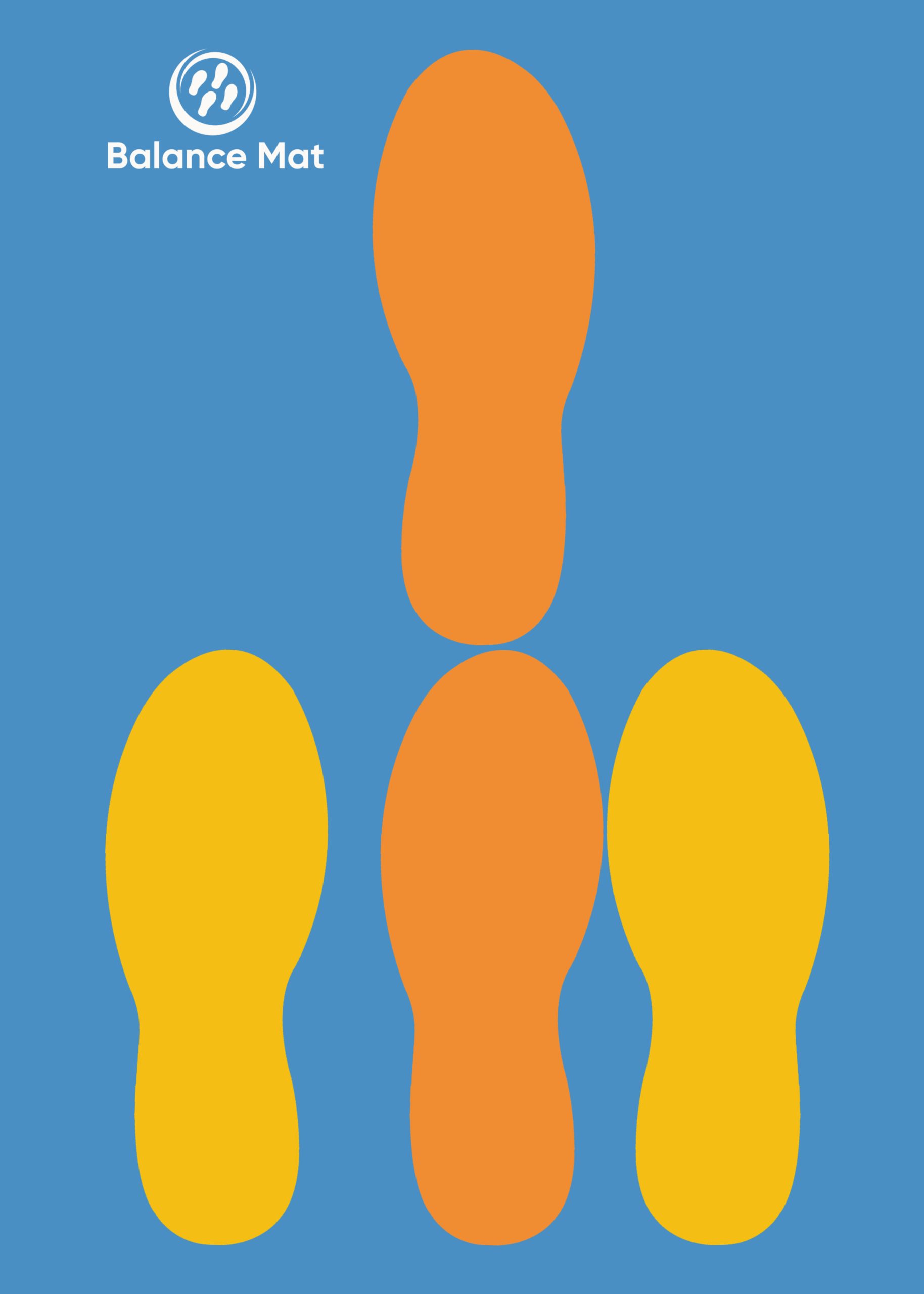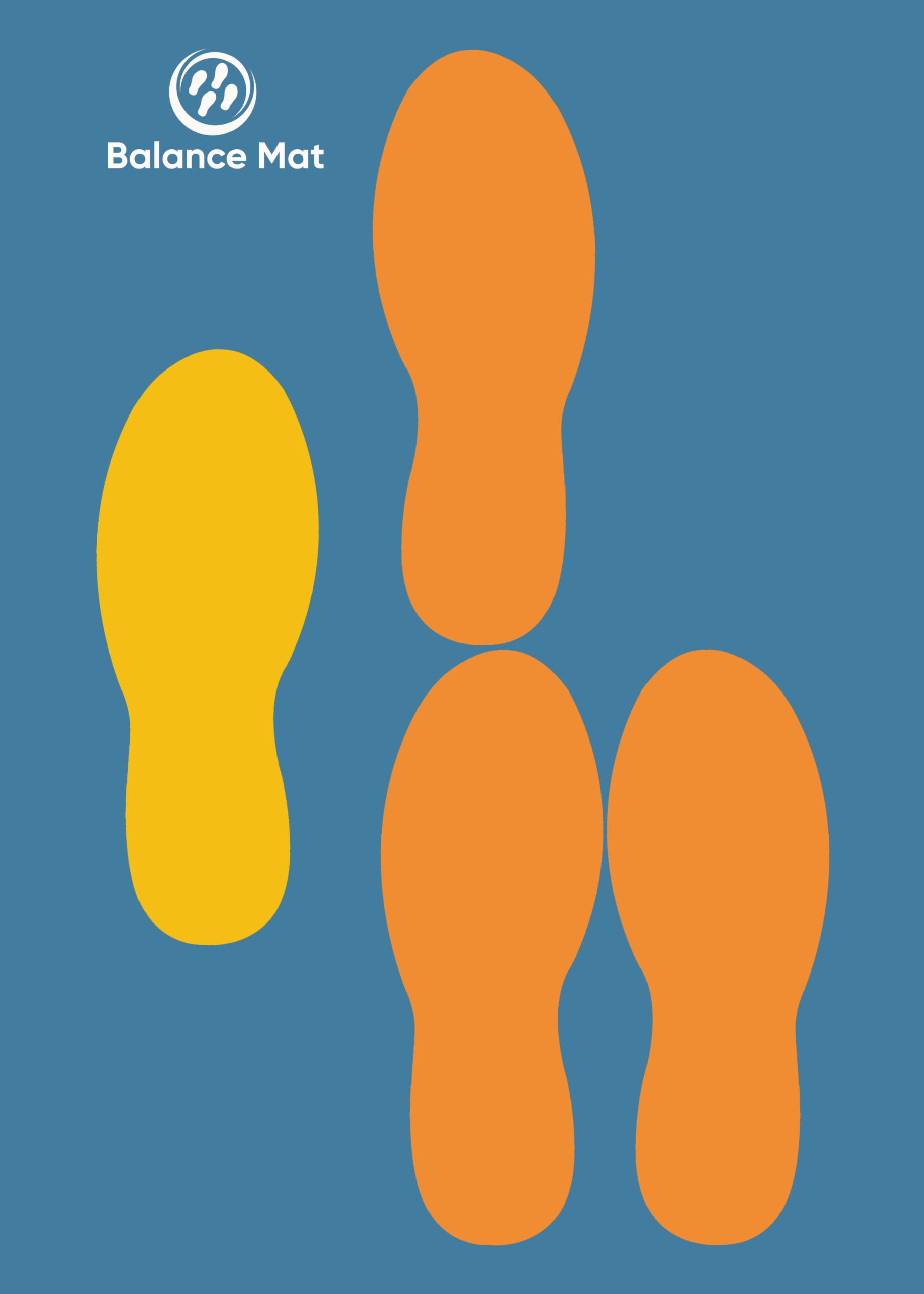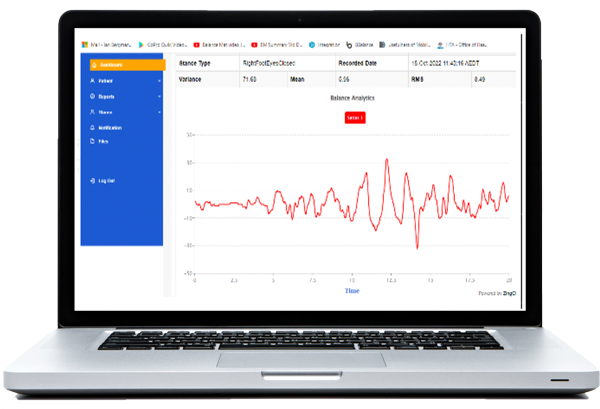Thanks to the Balance Mat – a world-first Australian technology – allied health, medical and research professionals can now measure people’s standing balance in a series of 20-second electronic tests.





The Balance Mat is an Australian-made, patented balance testing device that has been approved by the Therapeutic Goods Administration (TGA) that uses proprietary algorithms to measure a person’s postural sway or “balance.” It comprises a computerised floor mat with an internal mesh of optical fibre and an online test results system.
The system is operated by a computer or laptop running Windows 10 or 11. Balance data is displayed as a dynamic graph and score: the higher the score and spikier the graph, the greater the degree of postural sway and the poorer the person’s balance. The final graph, score, biodata, health status and relevant notes can be captured in the test results system for comparison over time.
The Balance Mat system works by sensing and recording the continuous postural adjustments (or postural sway) of a person standing on the computerised mat: the higher the score the poorer the person’s balance. For a full technical explanation see the FAQ below: How does the Balance Mat work?
The BESS Balance Mat is for physiotherapists, exercise physiologists and sports scientists working in the area of concussion care. It enables the practitioner to conduct three separate balance tests in the feet together, tandem and dominant-foot single-leg stances, all with the athlete’s eyes closed. The system builds on the traditional stances of the Balance Error Scoring System (BESS) but omits the foam normally used in favour of the 6mm thick computerised mat surface.
The Multimetric Balance Mat is mainly for doctors, nurses, exercise physiologists and physiotherapists, and particularly those in the “agewell” and sports sectors. It is also useful for aged care facilities, geriatricians and gerontologists. This system enables a sequence of four 20-second balance tests (in a sequence of normal, tandem, left foot, right foot stances). It can also be used in the treatment of patients after injury (particularly sports injuries), stroke and heart attack.
The Neurometric Balance Mat is for allied health and medical practitioners and balance researchers working in the fields of falls prevention, ageing and neurological conditions. It is useful for practitioners working in falls prevention and those focused on health conditions such as diabetes, Parkinson’s disease and other neurological conditions. The system is more complex than the other two, enabling a sequence of 12 separate 20-second balance tests in the stances of normal, feet together, tandem, semi tandem, left and right foot, each with the person’s eyes open and eyes closed.
Canberra company Balance Mat Pty Ltd is the developer and manufacturer of Balance Mat technology and systems. The company owns the intellectual property (IP) underpinning its patented Australian Balance Mat technology.
Balance Mat Pty Ltd employs three staff members: Ian Bergman (Managing Director), Abishek Shrestha (Software Engineer) and Binod Shrestha (Software Developer).
Specifically, the company:
• partners with university researchers on balance measurement
• provides ongoing support to university research partners and clients
• carries out data management and quality assurance
• develops Balance Mat software in response to user requirements.
Since the inception of Balance Mat Pty Ltd in 2016 the company has been collaborating with the following organisations who have helped us develop and validate our unique balance testing system. They include the Council on the Ageing (COTA) ACT and COTA SA, University of Canberra, Hastings Medical Centre, RMIT University and Edith Cowan University.
The Multimetric Balance Mat morphed into the Neurometric Balance Mat in liaison with Professor Ecosse Lamoureux from the Singapore Eye Health Institute (SERI) and the BESS Balance Mat for concussion care was developed in consultation with Assoc. Professor in Physiotherapy Dr James McLoughlin.
Maintaining balance involves three primary systems of the human body: the vestibular (equilibrium), somatosensory (proprioception and kinesthesia) and visual (spatial location relative to objects). The Balance Mat measures a person’s static balance during a series of 20-second tests. These tests provide a graph and score of the person’s postural sway while standing as still as they can. See our Products page for details or go to the Balance Metrix shop.
A standard test on the Balance Mat goes for 20 seconds. This can be shortened at the practitioner’s discretion.
At the end of each Balance Mat test or set of tests the practitioner has the option to upload the graph and score to the online test results system along with biodata comprising name, gender, year of birth, known medical conditions and notes regarding the person whose balance is being tested. The practitioner has access to the data they upload on the test results system via a unique user ID and password. Should they wish to use the system offline on their own system this can be accommodated upon request (charges may apply).
The allied health, medical or fitness practitioner needs to assess the information provided by the Balance Mat and use other tests and information available to determine if the person has a problem with their balance ability requiring specialist, medical or allied health referral or whether their own interventions will suffice.
A sensor inside the mat has an LED and LDR which send and receive light through a mesh of optical fibre. Any deviation in the fibre caused by pressure on the mat surface affects the light signal. A microprocessor in the sensor detects the deviations and sends data to a connected Windows 10 or 11 computer or laptop.
Data is displayed as a dynamic graph and score as the person moves on the mat. The graph and score rise and fall in accordance with any movement on the mat. The score measures the deviation from the mean. When the person on the mat is not moving the graph flatlines and the score is zero. When the person moves the graph shows peaks and the score rises.
If the movement on the mat suddenly stops the graph will immediately flatline, but the score will decrease gradually. This is because the graph is measuring instantaneous data points and the score is measuring the variation from the mean (or the progressive sum of the cumulative data points).
Balance Mat data can be used for a range of science and research, analytical, diagnostic, therapeutic and comparative purposes including falls prevention, fitness monitoring, progress tracking, physiotherapy, exercise physiology and rehabilitation.
The University of Canberra opened the doors of its Human Centred Technology Research Centre – otherwise known as the Robotics Lab – to a local television crew on 22 May 2022. You can see photographs of Dr Maryam Ghahramani leading a discussion on the Balance Mat technology and the calibration robot she helped to develop here.
Whereas force plates and force platforms measure the centre of pressure (CoP) as an index of postural stability – in other words indirectly – the Balance Mat is unique in that it measures postural sway directly. That’s the reason behind our claim that the Balance Mat is a breakthrough in balance measurement.
The Balance Mat is based on a floor mat that is only 6mm thick, making it easy, safe and non-threatening for older people and people with neurodegenerative conditions to stand on comfortably. The Balance Mat is also lightweight enough for practitioners to use in a mobile service.
The Balance Mat provides information in real-time and enables the practitioner and client to view and work on the client’s balance ability together. The real-time data is generated when the person stands on the computerised mat embedded with optical fibre cable. The light running through the optical fibre changes according to their movements. This sends a signal via proprietary algorithms to the computer or laptop.

You can buy a Balance Mat from $1,800 or subscribe for as little as $75 per month. Inventor Ian Bergman’s business Balance Metrix is the supplier of Balance Mat systems. You can see the various options on the Shop page of the Balance Metrix website.
Tel: (02) 6162 5100 or Mob: 0457 123 852
Email: Ian.Bergman@balancemat.com.au
Balance Mat Pty Ltd ABN 91 142 134 012
Canberra Technology Park, Unit D102, 49 Phillip Avenue, Watson ACT 2602, Australia
Balance Mat Pty Ltd is a wholly owned subsidiary of Canberra-based public unlisted company Perimeter Security Industries International Ltd. To learn more see our Company page.